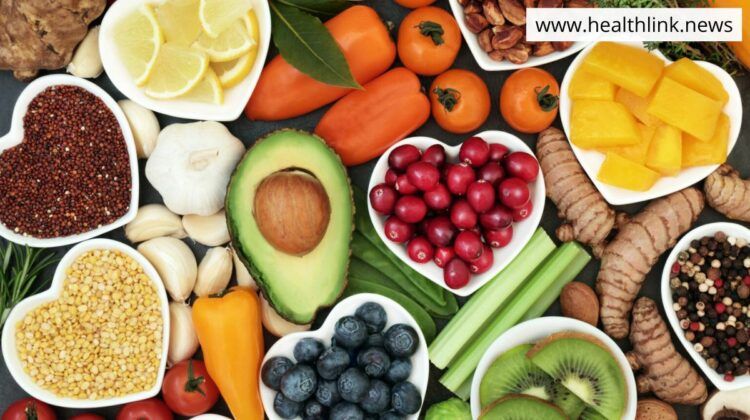Eating Healthy Meals Can Reduce Risk of Heart Disease

A recent study that was published contends that consuming only one cup of leafy green vegetables per day can reduce your risk of developing heart disease.
Over 53,000 individuals who participated in the Danish Diet, Cancer and Health study over 23 years period were included in the study. Their average age at the start of the trial was 56, and none of them had cardiac disease. Throughout the trial, researchers discovered that persons who consumed the most nitrate-rich vegetables (particularly leafy greens like spinach and lettuce) had a 12% to 26% decreased risk of cardiovascular disease. The optimal serving size of greens is one cup per day, while greater intakes did not appear to further reduce risk. The small drop in blood pressure seen in those participants may contribute to the heart benefit. Nitric oxide, which relaxes and expands blood vessels, is created during digestion from the nitrate present in food.
What is a healthy meal for the heart?
Foods that are good for your heart reduce your risk of getting heart disease in the long term. Lowering your blood pressure, total cholesterol, LDL (Low-Density Lipoprotein) (bad) cholesterol, triglycerides, and fasting blood sugar, can achieve this. They might have significant antioxidant content. These safeguard against oxidative stress and inflammation that support the growth of heart disease.
Heart-healthy food denotes:
- low in cholesterol and salt
- fibre-rich, low in saturated fats, and trans-fat-free
- rich in minerals, vitamins, and antioxidants
Leafy greens
Low-calorie leafy greens include spinach, kale, lettuce, and collard greens. They are also loaded with vitamins A, C, E, K, and magnesium, among other nutrients.
These greens can be added to any salad. When your parents advised you to eat your greens, they were on to something. They are rich in minerals and vitamins. They contain a lot of nitrates as well, which helps to widen blood vessels so that oxygen-rich blood can flow to your heart. They are present in vegetables like:
- Spinach
- Bok Choy
- Mustard greens
- Arugula
Serving suggestion: Add greens to a stir-fry, sauté them in olive oil, or roast them with garlic to bring out the taste.
Nuts
Nuts are a good source of vitamins, minerals, and heart-healthy fats. Walnuts, pecans, peanuts, almonds, macadamia nuts, and Brazil nuts could be good additions to your diet.
Per week, aim for five servings of nuts. An ounce or so makes up one serving. Studies According to reliable sources, eating at least five portions of nuts per week dramatically lowers the cardiovascular disease risk.
However, because nuts are high in calories, portion control is advised. 24 almonds, 12 macadamia nuts, or 35 peanuts make up one serving.
Olive oil
Olive oil is a good example of unsaturated fat that can be used to replace unhealthy saturated and trans fats. The high antioxidant content in olive oil may have anti-inflammatory benefits. It is a reputable source that promotes people’s and their hearts’ health. You may use olive oil in a variety of ways because it is excellent for cooking and highly heat resistant.
Sweet potatoes
sweet potatoes in place of white potatoes. Compared to white potatoes, these potatoes have a lower glycaemic index, so they will not trigger a sharp rise in blood sugar. They also include lycopene, fiber, and vitamin A.
Taste Advice: Instead of using sugary toppings, boost their inherent sweetness with a sprinkle of cinnamon and lime juice.
Oranges
Oranges are sweet and juicy, and they include the cholesterol-lowering fiber pectin. They also contain potassium, which aids in blood pressure regulation. Two cups of OJ per day improved blood vessel health, according to one study. Men’s blood pressure was also reduced by it. A medium orange contains approximately 62 calories and 3 grams of fiber.
Swiss Chard
This leafy dark green vegetable is high in magnesium and potassium. These minerals aid in blood pressure regulation. Additionally, heart-healthy fiber, vitamin A, and the antioxidants lutein and zeaxanthin are all present in Swiss chard. Serve it with grilled meats or use it to serve fish.
Preparation Tip : Saute it in garlic and olive oil until wilted. Add pepper and herbs for flavor.
Barley
Try substituting this nutty whole grain for rice. Barley can also be cooked into stews and soups. Barley’s dietary fiber can reduce cholesterol levels. It could also reduce blood sugar levels.
Learn about your barley. The most nutrient-dense form of barley is hulled or whole grain. Toasted and ground barley grits are used. They are delicious as a side dish or as cereal. Despite being fast, pearl barley has lost a lot of its heart-healthy fiber.
Avocado
Monounsaturated fats are found in abundance in avocados and are associated with lower levels of Heart illness.
Avocado can be smeared over whole-wheat toast and then topped with olive oil, a little salt, and pepper. Alternately, you may include avocado in a variety of foods, such as these tasty turkey patties with avocado.
Non-starchy vegetables
Your new diet should focus heavily on vegetables to promote heart health. They are low in calories, cholesterol, and carbohydrates, and abundant in fiber and vitamins.
Vegetables that are red, yellow, or oranges, such as carrots, sweet potatoes, peppers, and squash, are rich in vitamins and antioxidants. A delicious, nutritious snack is carrot and broccoli spears dipped in hummus.
Beans
Lentils, chickpeas, and beans are all high in fiber and have low glycaemic indexes.
Researchers observed persons with diabetes who consumed one cup of legumes every day for three months in a study published in 2012. They discovered that compared to diabetics who did not include beans in their diet, those individuals experienced higher drops in hemoglobin A1c readings and systolic blood pressure.
Beans are simple to incorporate into salads, dips, casseroles, chili, and soups. When purchasing canned beans, go for the low-sodium variety.
Spices and herbs
Spices and herbs bring flavor to food without harmful amounts of salt. A low-sodium diet is crucial to maintaining healthy blood pressure. Your taste sensations will be stimulated without the addition of excess salt by this Persian stew with fresh herbs, for instance.
Start reading the salt content on the food labels to ensure that your daily salt consumption stays under 2,300 mg. Aim for a daily salt intake of no more than 1,500 mg.
Cinnamon, another well-liked spice, has been demonstrated to improve insulin sensitivity and lower blood sugar. Consider adding some cinnamon to your yogurt or oatmeal for a heart-healthy boost with a touch of heat.
Cherries
Cherry juice, dried cherries, sweet cherries, and sour cherries are all delectable. All are rich in anthocyanins, an antioxidant. They may aid in blood vessel defense, according to some.
Learn More: Add dried cherries to wild rice, green salads, muffin batter, porridge, and rice dishes.
Blueberries
Simply brilliant in terms of nutrition are blueberries. They contain anthocyanins, those antioxidants that support blood vessels. The rich blue color of the berries is a result of those antioxidants. Additionally, blueberries contain fiber and a wide range of other beneficial elements. Add blueberries, either fresh or dried, to your yogurt, pancakes, or cereal.
The idea for a dessert: Puree some of it to make a sweet sauce that you can drizzle over other sweet things or use as a dip.
